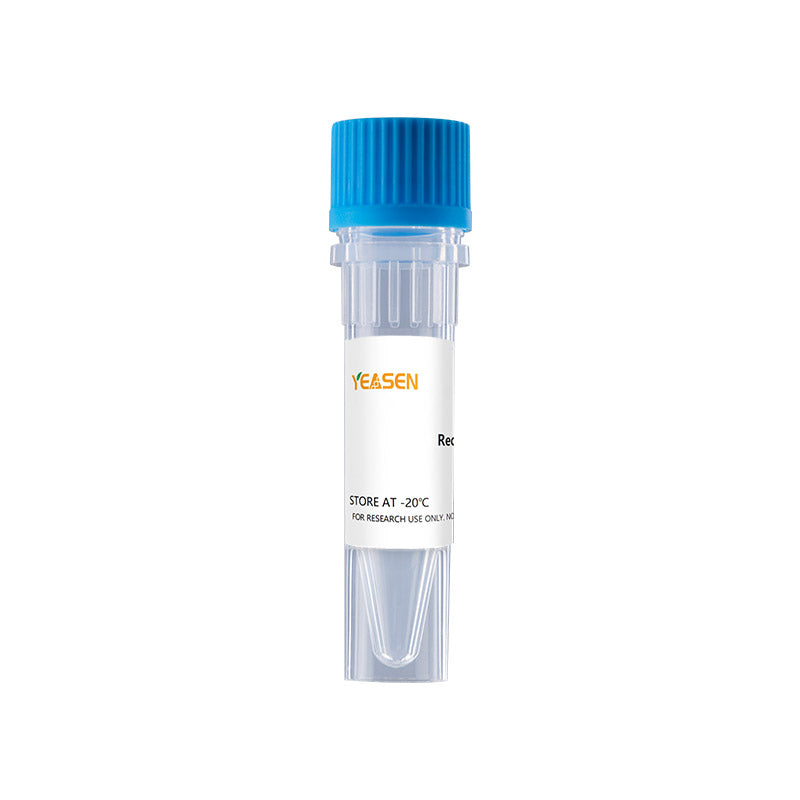Description
CXCL11 also known as I-TAC is belonging to the CXC chemokine family. CXCL11, together with MIG and IP-10, constitute a subset of chemokines that are ligands for CXCR3, a chemokine receptor that is primarily expressed on activated Th1 cells and NK cells. Mouse CXCL11 also shares 36% and 29% aa sequence identity with mouse IP-10 (Crg-2) and mouse MIG, respectively. CXCL11 binds CXCR3 with a higher affinity than CXCL10, suggesting that CXCL11 has the potential to restrain inflammatory autoimmunity. Similar to CXCL10, CXCL11 has been shown to be a chemoattractant for IL-2-activated T-lymphocytes, but not for isolated T-cells, neutrophils or monocytes.CXCL11 is not only a major effector for T cell chemotaxis in the pathophysiology of neuroinflammatory disorders, but also plays a crucial role in migration of activating T cells during IFN-dominated immune responses.
Product Properties
|
Synonyms |
beta-R1, b-R1, chemokine (C-X-C motif) ligand 11, CXCL11, H174, H174IP9, Interferon gamma-inducible protein 9, Interferon-inducible T-cell alpha chemoattractant, ITAC |
|
Accession |
|
|
GeneID |
|
|
Source |
E.coli-derived mouse I-TAC/CXCL11 protein, Phe22-Met100. |
|
Molecular Weight |
Approximately 9.1 kDa. |
|
AA Sequence |
FLMFKQGRCL CIGPGMKAVK MAEIEKASVI YPSNGCDKVE VIVTMKAHKR QRCLDPRSKQ ARLIMQAIEK KNFLRRQNM |
|
Tag |
None |
|
Physical Appearance |
Sterile Filtered White lyophilized (freeze-dried) powder. |
|
Purity |
>98% by SDS-PAGE and HPLC analyses. |
|
Biological Activity |
The biological activity determined by a chemotaxis bioassay using mouse CXCR3 transfected 293 cells is in a concentration of 10-100 ng/mL. Fully biologically active when compared to standard. |
|
Endotoxin |
< 1.0 EU per 1μg of the protein by the LAL method. |
|
Formulation |
Lyophilized from a 0.2 μm filtered concentrated solution in 10 mM Sodium Citrate, pH 4.0, with 600 mM NaCl. |
|
Reconstitution |
We recommend that this vial be briefly centrifuged prior to opening to bring the contents to the bottom. Reconstitute in sterile distilled water or aqueous buffer containing 0.1% BSA to a concentration of 0.1-1.0 mg/mL. Stock solutions should be apportioned into working aliquots and stored at ≤ -20℃. Further dilutions should be made in appropriate buffered solutions. |
Shipping and Storage
The products are shipped with ice pack and can be stored at -20℃ to -80℃ for 1 year.
Recommend to aliquot the protein into smaller quantities when first used and avoid repeated freeze-thaw cycles.
Cautions
1. Avoid repeated freeze-thaw cycles.
2. For your safety and health, please wear lab coats and disposable gloves for operation.
3. For research use only!
Payment & Security
Your payment information is processed securely. We do not store credit card details nor have access to your credit card information.
Inquiry
You may also like
FAQ
The product is for research purposes only and is not intended for therapeutic or diagnostic use in humans or animals. Products and content are protected by patents, trademarks, and copyrights owned by Yeasen Biotechnology. Trademark symbols indicate the country of origin, not necessarily registration in all regions.
Certain applications may require additional third-party intellectual property rights.
Yeasen is dedicated to ethical science, believing our research should address critical questions while ensuring safety and ethical standards.

